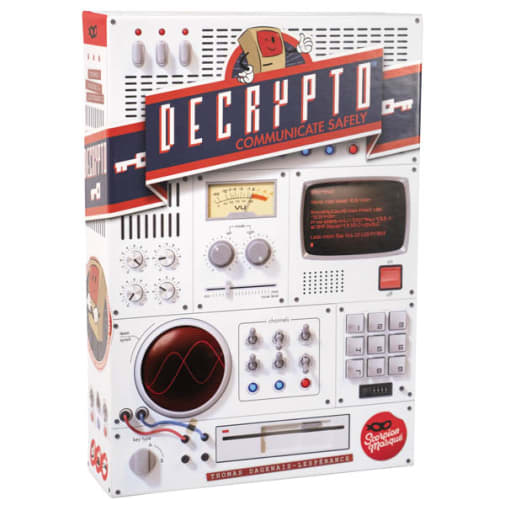Two opposing teams of spies enter this code-cracking arena. Only one emerges victorious! In this veritable verbal volley, each team sits opposite their 4 privy "code words." These 4 words match to numbers 1-4. To begin a round, each Encrypter (one per team) draws a card with a 3-character sequence, such as "4-1-2." Suppose White Team has these words in order 1-4: "Bottle," "Camera," "Egg," and "Tape." The White Encrypter may think of and announces the following clues: "Sticky," "Glass," and "Picture." Other players on the team then guess the intended sequence. If the revealed sequence matches the team's guess, no penalty is given - but if the guess is wrong, the team gets a miscommunication token! Two tokens and a team loses.
Meanwhile, Black Team makes a note of the clues and sequence; in this way, both teams keep a running tally of their own and their opponent's clues. In future rounds, this becomes important as each team gets the first chance to "intercept" the other team's sequence! Successfully intercepting two messages earns that team a win. Compared to Codenames, this provides an interesting twist on word-guessing: Encrypters must make their clues obvious enough for their own team to guess, but vague enough to prevent the opposing team from intercepting the sequence! Encrypters can also use phrases or other "passcodes" (within the realm of reason) to further obscure intent. Overall, a fantastic party game for any synonym sleuth! For 3-8 players; 15-45-minute playtime.

